Most frogs are opportunistic carnivores, and will eat whatever they can get their tongues on. Their main restriction is size, as they do not chew their food, instead swallowing it whole.
Do frogs eat fish?
Many frogs spend part or all of their time in and around water. Some may only come to water when breeding, whereas there are some aquatic species that never leave the water. Most frog species are opportunistic carnivores. In general, they do no chase or stalk their prey, instead relying on ambush hunting.
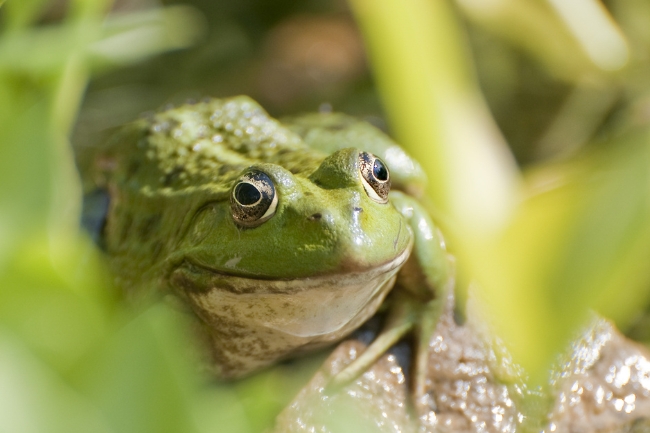
Their long and sticky tongues are incredibly fast, so if an animal is caught unawares they have a good chance of pulling them in to their mouth. The main restrictions for frogs is the size of their meal, as they do not chew their food and must swallow it whole.
Because their prey usually dies in the frog’s stomach, they also need to avoid any species that have good defense mechanisms, like stings or fangs, as they might get injured when they are trying to eat them.
| Frog Species | Fish Consumption | Additional Information/Explanation |
|---|---|---|
| African Clawed Frog | Yes | African clawed frogs are known to consume small fish as part of their diet. They have strong jaws and teeth-like structures that help them grasp and consume their prey. |
| Indian Bullfrog | Yes | Indian bullfrogs have been observed feeding on small fish, tadpoles, and other aquatic vertebrates. Their large size and powerful hind legs enable them to capture and consume fish. |
| Green Frog | Occasionally | While green frogs primarily feed on insects and other small invertebrates, they have been known to opportunistically consume small fish when available. Fish make up a small portion of their diet. |
| African Bullfrog | Yes | African bullfrogs are voracious predators that consume a wide range of prey, including fish. They have powerful jaws and can swallow prey as large as their own body size. |
With all this in mind fish aren’t the most common of food for frog species. Firstly many fish are often bigger than the frogs that might eat them. They are also often fast, and particularly cautious when in their juvenile stages. For those frogs that do not spend a great deal of time in water, there will also be a reduced chance of them coming into contact with fish.
However, there are species that do feed on fish, many of these aquatic, spending all their time underwater. Most frog species don’t tend to specialise in one food type, and will eat other foods at the same time as fish. Here are a few of the species that will spend their time fishing for a tasty meal.
| Frog Species | Feeding Adaptations | Additional Information/Explanation |
|---|---|---|
| African Clawed Frog | Webbed Feet, Strong Jaws, Tooth-like Projections | African clawed frogs have webbed feet for efficient swimming and capturing fish. They also possess strong jaws and tooth-like projections on the upper jaw, which aid in gripping and consuming prey. |
| Indian Bullfrog | Powerful Hind Legs, Large Mouth | Indian bullfrogs have powerful hind legs that allow them to make swift lunges and capture fish. They also have a large mouth that can accommodate larger prey items. |
| Green Frog | Agile Tongue, Sit-and-Wait Strategy | Green frogs use their agile tongue to quickly snatch fish or other prey items within striking distance. They employ a sit-and-wait strategy, patiently waiting for prey to come close before striking. |
| African Bullfrog | Powerful Jaw Muscles, Ambush Predation | African bullfrogs have strong jaw muscles that enable them to capture and swallow larger prey, including fish. They use ambush predation, lying in wait and seizing prey that passes by. |
Also read: Frogs & Their Teeth (Do They Bite & Does it Hurt?)
American bullfrog
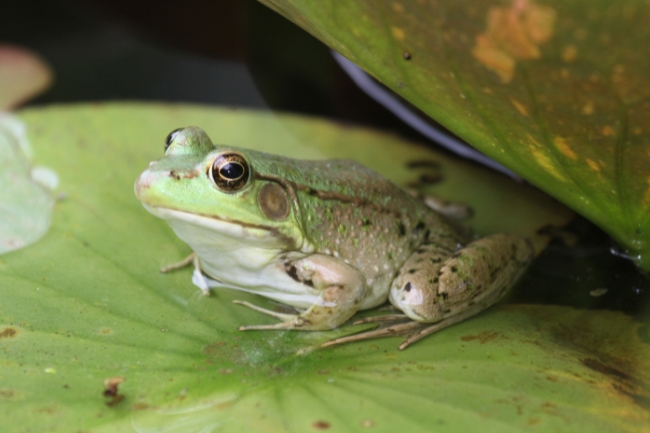
The American bullfrog is a large brown and green frog that is native to North America and Canada, though it has been introduced across much of the rest of the world. It gets it name from the distinctive croak of the male in the breeding season.
Fish are not a key part of the American bullfrog’s diet, however, they will eat fish if the opportunity arises. This large and opportunistic predator has been found to eat a wide range of different species, even including mice, tarantulas and crayfish.
African bullfrog
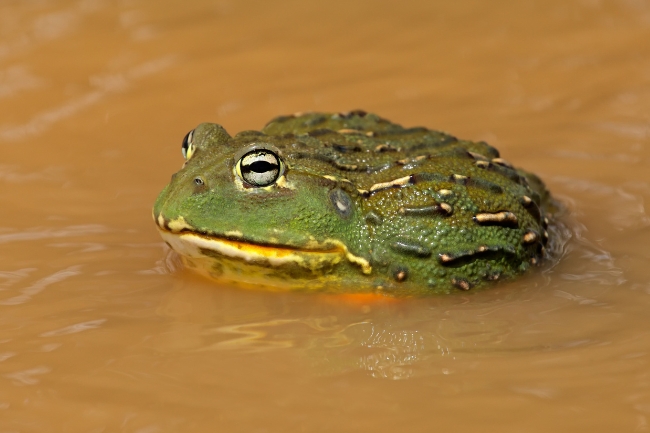
The African bullfrog is a large and rather rotund looking species, that is found across many African countries, including Botswana, Mozambique and Uganda. This species lives in a wide range of habitats, including relatively dry habitats, such as scrubland, meaning that they don’t interact with fish on a regular basis.
During the breeding season they head to water, however many of the pools or ditches they use are only temporarily wet. Such temporary wetlands often do not contain fish as they would not survive the dry season.
However, when the African bullfrog does come into contact with fish, their large size makes it easy for them to include them in their diverse diet, along with invertebrates, rodents, birds and even some times their own kind.
African dwarf frogs
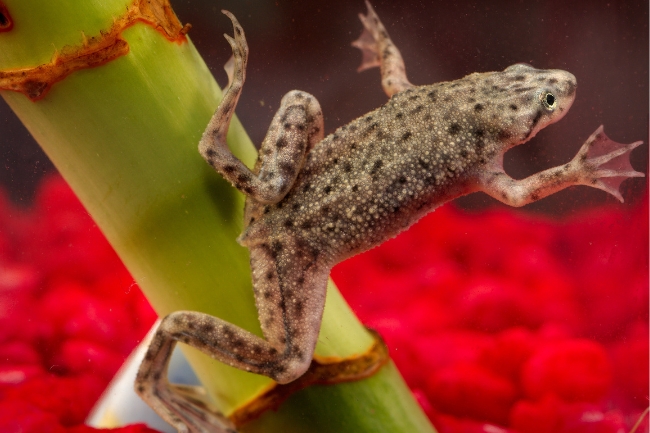
African dwarf frogs are a small aquatic species of frog, found across equatorial Africa. Their grey colour, and snub-nose, make them an attractive frog often sold within the pet trade to be kept in aquariums alongside fish.
Due to their tiny size they can only eat very small fish, or fry, and are often kept alongside larger species of fish, who they ignore as being too big to eat. Although aquatic, they cannot breathe underwater, and will still need to come to the surface for air.
African clawed frog
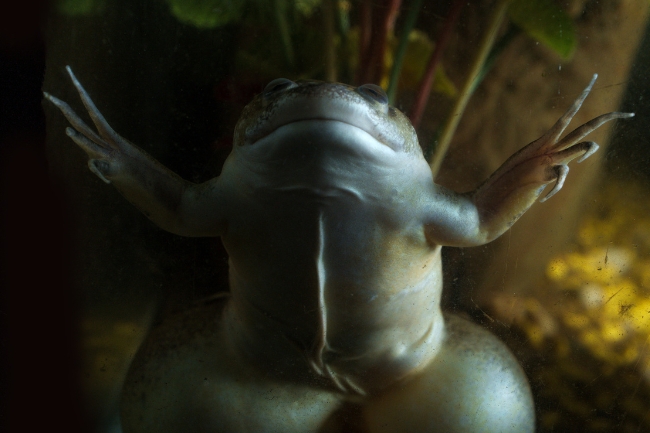
Like the African dwarf frog, the African clawed frog is completely aquatic. This slightly larger species is so named for the claws on its back feet, used to help tear apart its food, an unusual feature in a frog.
Another unusual feature of this frog is that it does not have the characteristic frog tongue, with which to grab and pull in their prey. Instead they use their hands to push their prey into the mouth.
Common Surinam toad
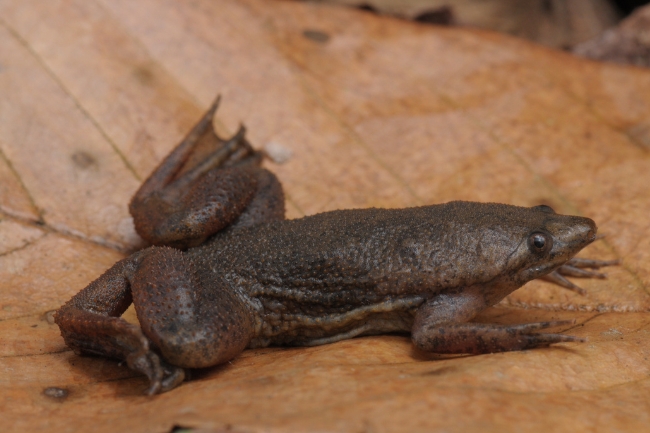
The common suriname toad has got to be one of the strangest frogs in the world. Found in South America, this brown species looks like it was stepped on, with its squashed form and pointed face.
Like the African clawed frog, it lacks a tongue, and uses suction to pull in its food. As well as its flat figure the common surinam toad has the bizarre ability to incubate its young in a honeycomb of skin on its back. The young eventually emerge ready to go out into the world in a rather gruesome looking birthing scene.
Eat or be eaten?
When it comes to fish and frogs it’s a world of eat or be eaten. In most cases it’s the fish that get the chance to eat, and the frogs that are on the menu. This is particularly true of the eggs and tadpoles, who are easy prey for most fish if they get a chance.
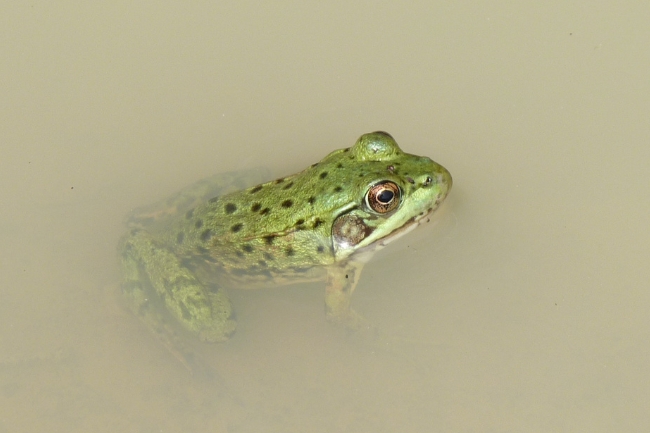
It’s for this reason that most frogs prefer to lay their eggs in pools where there are no fish. Temporary pools that dry up periodically can be a good option, as the fish can’t survive the dry period. Shallow wetlands can also be an option as only small fish can live in them.
Only a few species of frog have been able to turn the tables, and put fish back on the menu. These tend to be aquatic species who spend a great deal of time in the water. Even with these fish-eating species the majority can only cope with particuarly small species or with young fish.
As fish are somewhat more difficult to catch then a fly or a spider, these species often have special adaptations, such as being able to use suction to pull in their catch, or claws to shred them apart. All these clever evolutions help these frogs to best the predators that usual best them.
But even with all this in their favour it’s important to remember that these frogs could still become fish food themselves if they aren’t careful. It all depends who’s the biggest fish in the pond.

